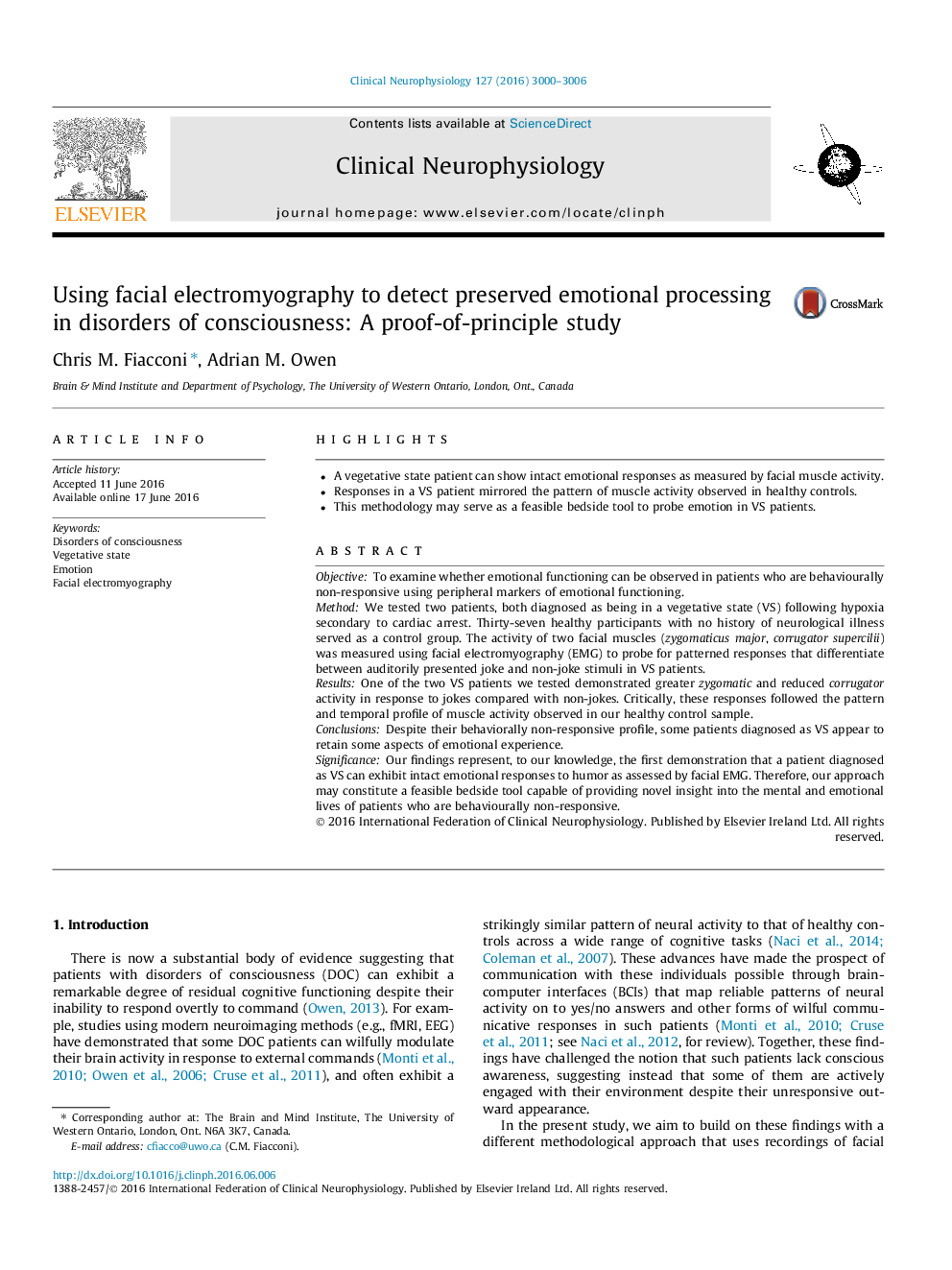| Article ID | Journal | Published Year | Pages | File Type |
|---|---|---|---|---|
| 6007278 | Clinical Neurophysiology | 2016 | 7 Pages |
â¢A vegetative state patient can show intact emotional responses as measured by facial muscle activity.â¢Responses in a VS patient mirrored the pattern of muscle activity observed in healthy controls.â¢This methodology may serve as a feasible bedside tool to probe emotion in VS patients.
ObjectiveTo examine whether emotional functioning can be observed in patients who are behaviourally non-responsive using peripheral markers of emotional functioning.MethodWe tested two patients, both diagnosed as being in a vegetative state (VS) following hypoxia secondary to cardiac arrest. Thirty-seven healthy participants with no history of neurological illness served as a control group. The activity of two facial muscles (zygomaticus major, corrugator supercilii) was measured using facial electromyography (EMG) to probe for patterned responses that differentiate between auditorily presented joke and non-joke stimuli in VS patients.ResultsOne of the two VS patients we tested demonstrated greater zygomatic and reduced corrugator activity in response to jokes compared with non-jokes. Critically, these responses followed the pattern and temporal profile of muscle activity observed in our healthy control sample.ConclusionsDespite their behaviorally non-responsive profile, some patients diagnosed as VS appear to retain some aspects of emotional experience.SignificanceOur findings represent, to our knowledge, the first demonstration that a patient diagnosed as VS can exhibit intact emotional responses to humor as assessed by facial EMG. Therefore, our approach may constitute a feasible bedside tool capable of providing novel insight into the mental and emotional lives of patients who are behaviourally non-responsive.
